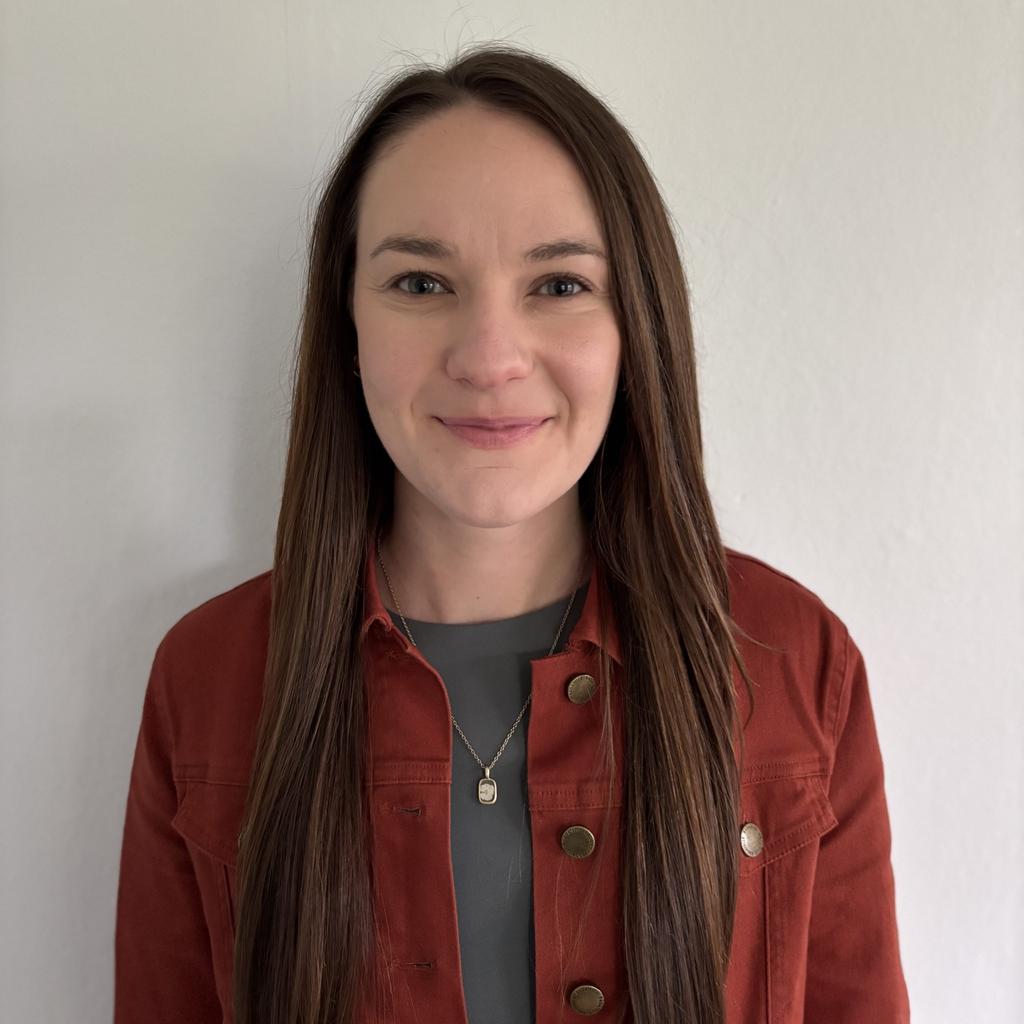Why this resume works
- Quantifies accomplishments: Measurable accomplishments like increasing art sales by 15% and cutting costs by 10% reveal the applicant’s value and tangible impact.
- Uses action-oriented language: Strong action verbs like “created,” “improved,” and “collaborated” convey initiative and effectiveness, reflecting the applicant’s dynamic approach to tasks.
- Showcases career progression: Advancing from visual artist to art specialist to painter shows clear career progression, demonstrating increasing responsibility and skill refinement over time.
More Painter Resume Examples
Our painter resume examples offer insights into showcasing your artistic techniques, project management, and client collaboration skills. Use these art resume samples to craft a compelling resume that highlights your unique style and experience in the industry.
Entry-Level Painter
Why this resume works
- Centers on academic background: Listing degrees from New York Art Academy and Brooklyn Art Institute in the education section shows the applicant’s strong academic foundation early in their career.
- Puts skills at the forefront: Emphasizing skills like project management and color theory early in the resume follows the skills-based resume format, ideal for entry-level roles.
- Effective use of keywords: Including keywords like “custom murals” and “gallery setup optimization” strategically aligns with relevant roles.
Mid-Level Painter
Why this resume works
- Includes a mix of soft and hard skills: Mixing technical prowess with interpersonal skills, the applicant’s roles reveal an adeptness in client communication and project supervision, improving team efficiency and customer satisfaction.
- Demonstrates language abilities: With language skills spanning Spanish to Italian, the applicant bridges cultural gaps, enriching collaborations with diverse artists and international clients.
- Points to measurable outcomes: Achieving a 98% satisfaction rate while saving $5,000 in rework costs showcases the applicant’s commitment to quality and precision in every project undertaken.
Experienced Painter
Why this resume works
- Showcases impressive accomplishments: Delivering standout results like improving customer satisfaction by 35% and managing $50K budgets showcases senior-level artistry and business impact.
- Focuses on work history: Using a chronological resume format, the applicant emphasizes over a decade of experience, progressing from interior painter to leading high-budget artistic projects.
- Emphasizes leadership skills: Managing a team of restoration technicians and overseeing large-scale mural projects highlights leadership skills rooted in collaboration, organization, and effective project execution.
Painter Resume Template (Text Version)
Suki Wang
San Francisco, CA 94105
(555)555-5555
Suki.Wang@example.com
Professional Summary
Creative painter skilled in diverse techniques. Enhanced spaces’ aesthetics and improved project timelines. Provides unique artistic solutions.
Work History
Painter
BrightBrush Studios – San Francisco, CA
January 2022 – June 2025
- Created murals enhancing space aesthetic.
- Improved project timelines by 20%.
- Collaborated with team, reducing costs 10%.
Art Specialist
ColorWave Art Gallery – Lakeside, CA
January 2019 – December 2021
- Developed custom color palettes.
- Increased art sales by 15%.
- Led workshops, improving enrollments 25%.
Visual Artist
Canvas Visions – Riverside, CA
January 2018 – December 2018
- Executed complex painting techniques.
- Reduced material waste by 30%.
- Managed client commissions promptly.
Skills
- Oil Painting
- Watercolor Techniques
- Art Restoration
- Surface Preparation
- Creative Design
- Project Management
- Client Collaboration
- Time Management
Certifications
- Certified Color Expert – Color Academy
- Advanced Painting Techniques – Artistry Institute
Education
Master’s Fine Arts
Art Institute of Chicago Chicago, IL
May 2017
Bachelor’s Art History
University of California, Berkeley Berkeley, CA
May 2015
Languages
- Spanish – Beginner (A1)
- French – Beginner (A1)
- Italian – Beginner (A1)
Related Resume Guides
Advice for Writing Your Painter Resume
Explore our advice on how to write a resume for a painter position and discover how to best highlight your artistic skills and creative projects. Whether you’re aiming to capture the attention of galleries or clients, these tailored tips will help you paint a picture of your talent and experience.
Showcase your portfolio or projects
For a painter, showcasing your portfolio or projects on your resume helps show your skills and style in a way that words can’t always capture. When you’re applying for artistic roles like painting, having a visual display of your work can set you apart from others.
You should link to your online portfolio on platforms like Behance or Dribbble, or have a section in your resume with select projects. Including freelance work, school projects, and personal art pieces is perfectly fine. Each piece should be structured like a mini job entry.
Start with the project name and who it was for, if anyone specific. Then add a brief description of what the project was about and highlight what you did that made it special. Mention any impact it had, like if it got featured somewhere or led to more work opportunities.
This approach not only shows off what you’ve done but also how you’ve contributed creatively to each project. It’s a great way to tell your story through your art and make sure people remember you when they think about hiring someone for their next creative need.
Example of a projects section
Mural Painting for Community Center
Sunnydale Community Center
March 2023
- Conceptualized and painted a 20-foot mural depicting local wildlife, improving the community space.
- Collaborated with local artists to incorporate diverse artistic styles into the final piece.
- Organized workshops for community members to engage them in the painting process.
Residential Interior Wall Art
The Smith Residence
August 2022 – September 2022
- Designed custom wall art that complemented the home’s modern aesthetic.
- Used eco-friendly paints to ensure a sustainable project approach.
- Worked closely with clients to ensure design aligned with their vision and preferences.
Using professional resume examples can help you see how to organize your work and skills, making it easier to write a strong resume.
Emphasize your most relevant skills
For painters, both technical and soft skills are important for success. Having strong artistic abilities, like color theory and brush techniques, will help you create beautiful work. It’s also important to have soft skills like attention to detail and good communication to understand client needs and deliver the best results. These skills combined make you a more effective painter.
To highlight your skills, include a dedicated skills section in your resume where you can list software you know how to use, like Adobe Photoshop or Corel Painter, as well as your artistic talents. This will give employers a quick overview of what you bring to the table.
Weave these skills into your work experience bullet points. For example, mention how your expertise in mixing colors led to a successful mural project or how your ability to communicate clearly with clients helped achieve their vision.
By showing both your technical and soft skills in different parts of your resume, you’ll paint a complete picture of yourself as a skilled painter ready for any creative challenge.
Highlight your skills by picking a resume format that showcases your artistic techniques, color expertise, and completed projects.
Choose a professional resume template
When choosing a resume template for a painter, find one that creatively balances professionalism. Pick templates that are clean and structured to ensure hiring managers can read them easily. Avoid designs that are too decorative and might distract from your experience and skills.
A simple layout with clear headings and sections helps organize your work and shows you have an eye for detail without overwhelming the reader.
Make sure the format works well with applicant tracking systems (ATS). This means avoiding complex graphics or unusual fonts that ATS software might struggle with. Choose a resume style using standard fonts and plain text so all your information gets through smoothly.
You can use our Resume Builder to create your painter resume. It makes it easy to add details like your skills and past jobs with just a few clicks.
Format your resume properly
A proper resume format helps your application stand out and makes it easier for hiring managers to review. For a painter, the best format depends on your experience level.
If you have years of steady work history in painting roles, use a chronological resume to highlight your progression. If you’re newer or switching fields, opt for a functional format to emphasize skills like surface preparation, color matching, or tool handling.
5 resume formatting tips
- Structure with clear headings: Use distinct section headings like ‘Work Experience’ and ‘Portfolio’ for clarity.
- Choose consistent fonts: Select resume fonts like Arial or Calibri in 10-12 pt for readability throughout your resume.
- Use bullet points: Summarize job tasks and skills using bullet points to improve scanning.
- Aim for one page: Keep resumes to one page unless you have extensive painting experience.
- Ensure proper spacing and alignment: Maintain uniform margins and spacing for a clean, professional appearance.
Want to boost your resume’s chances with ATS? Our ATS Resume Checker reviews important parts and helps you improve your score right away.
Salary Insights for Painters
Understanding salary data can help you make informed decisions about your career path and potential relocation. Access to detailed wage and job outlook information makes it easier to plan for the future.
Top 10 highest-paying states for painters
Painters earn varying salaries across the United States, with a national average of $51,601. The table below highlights the states where painters command the highest compensation.
Our salary information comes from the U.S. Bureau of Labor Statistics’ Occupational Employment and Wage Statistics survey. This official government data provides the most comprehensive and reliable salary information for writers across all 50 states and the District of Columbia. The figures presented here reflect the May 2025 dataset, which is the most recent available as of this publication.
| State | Average Salary |
|---|---|
| Illinois | $69,290 |
| Alaska | $67,670 |
| District of Columbia | $62,140 |
| Minnesota | $60,540 |
| New York | $59,180 |
| Massachusetts | $58,940 |
| Connecticut | $57,240 |
| Rhode Island | $57,200 |
| Maine | $56,950 |
| Missouri | $56,650 |
FAQ
Do I need to include a cover letter with my painter resume?
Yes, adding a cover letter to your painter resume can help you stand out to employers and boost your chances of being hired. A cover letter allows you to show your enthusiasm for painting, highlight projects or techniques you’ve mastered, and display creative skills beyond what’s on your resume.
For example, if the company focuses on mural painting or restoration work, you can talk about your experience or interest in that area to show how well you fit their needs. You can use our Cover Letter Generator to ensure it’s structured well and effectively shows why you’re a great match for the role.
Looking at cover letter examples from other painters can also inspire and help tailor yours to meet both industry standards and reflect personal flair.
How long should a painter’s resume be?
For a painter, a one-page resume is usually perfect for showcasing your most relevant skills and experience. Highlight key areas like techniques you excel in, types of projects you’ve completed (residential, commercial, or specialty), and any specific materials you’re familiar with.
If you have extensive experience or specialized training that sets you apart, it’s fine to extend to a two-page resume. The key is ensuring each detail adds value—focus on recent projects and unique skills that make your work stand out.
Check out our guide on how long a resume should be for examples and tips tailored to your career stage.
How do you write a painter resume with no experience?
When crafting a painter resume with no experience, focus on showcasing your skills, education, and any relevant projects to demonstrate your potential in the painting field. Here are a few tips to help you get started:
- Highlight transferable skills: Focus on skills such as attention to detail, color mixing abilities, creativity, and knowledge of different painting techniques. Mention any relevant soft skills like communication or teamwork.
- Showcase education and training: Include any art classes, workshops, or certifications you’ve completed related to painting. This could be from school courses or community classes.
- Include personal projects: Discuss personal art projects or volunteer work where you’ve applied your painting skills. Describe the materials you used and the scope of these projects to give context.
- Leverage non-painting experience: If you’ve held jobs in other fields that required precision or artistic skills—like graphic design or set decoration—mention them to show you have a foundation for learning professional painting.
Consider building a portfolio alongside your resume to visually display your talents and help potential employers see what you can offer. Explore our guide on how to write a resume with no experience for more tips and examples.
Rate this article
Painter
Additional Resources
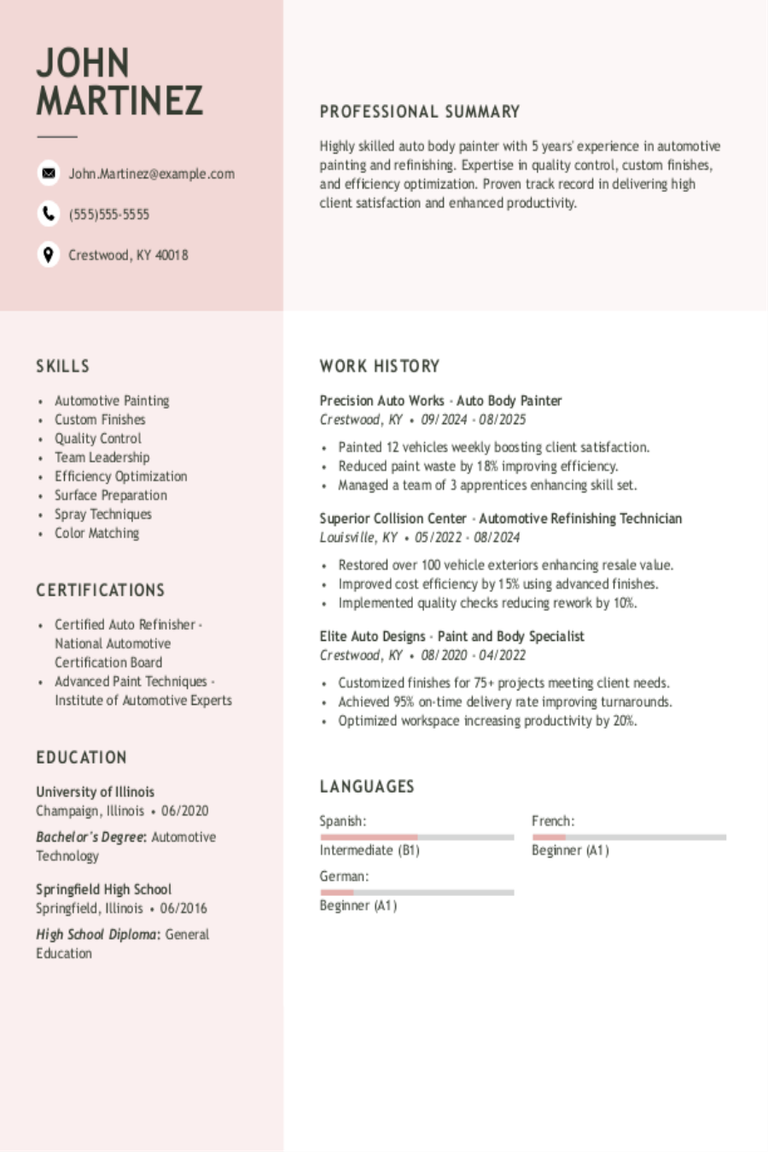
Auto Body Painter Resume Examples & Templates for 2025
Learn how auto body painters show their attention to detail and creative skills. These resume examples and tips can help you showcase your experience with tools, techniques, and quality finishes
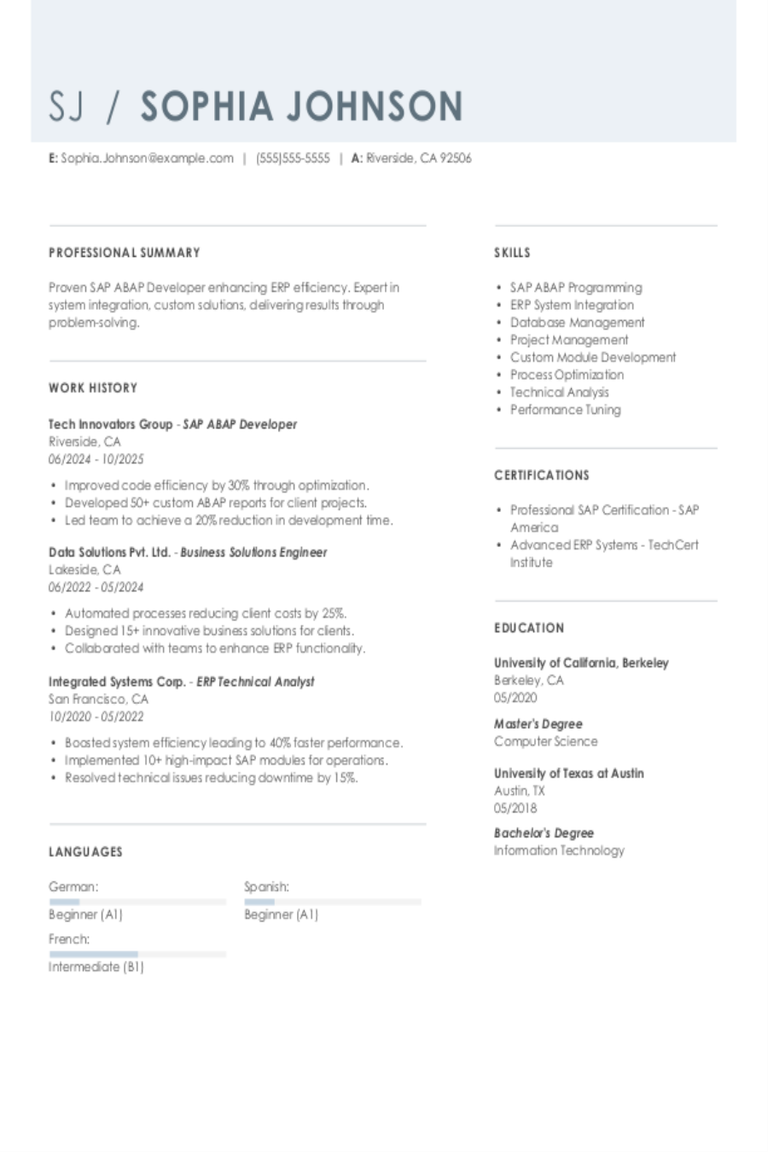
SAP ABAP Developer Resume Examples & Templates for 2025
Explore SAP ABAP developer resume examples and tips to learn how to spotlight your skills in coding, debugging, and system enhancements to stand out to hiring managers.Build my resumeImport existing
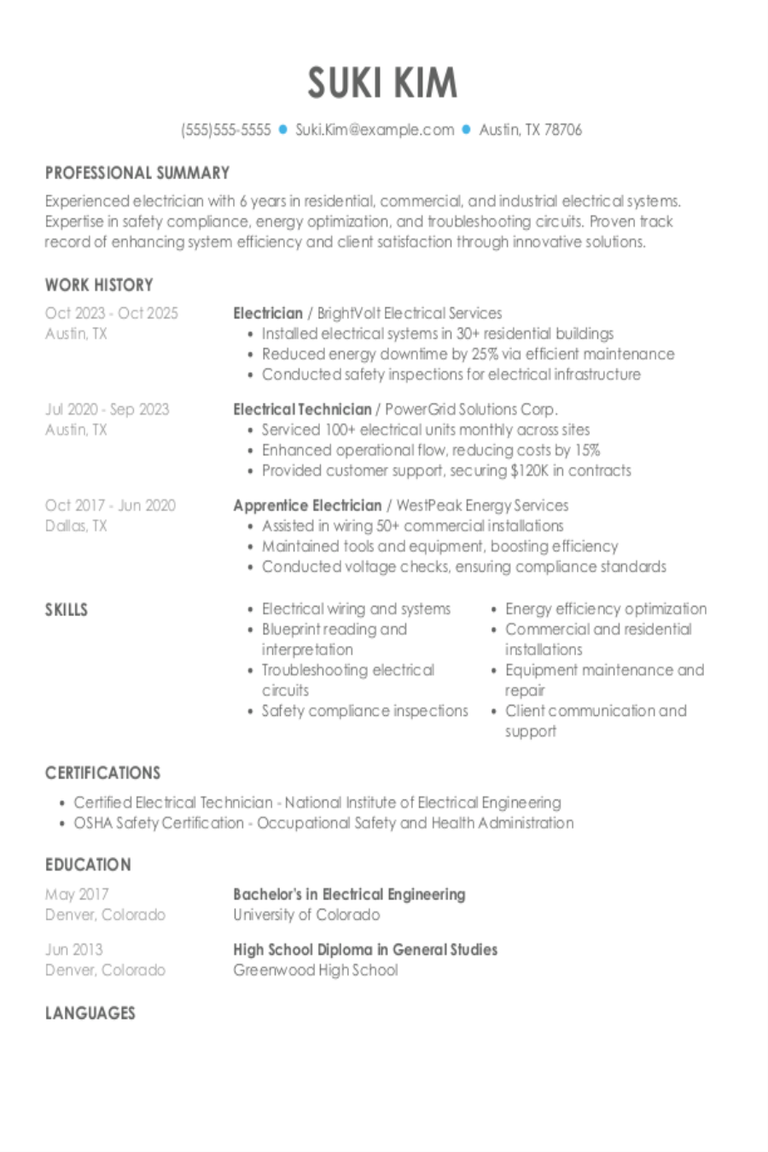
Electrician Resume Examples & Templates for 2025
Explore electrician resume examples to learn how to spotlight your wiring, troubleshooting, and safety skills. See how to emphasize your knowledge of electrical codes and highlight your experience across various
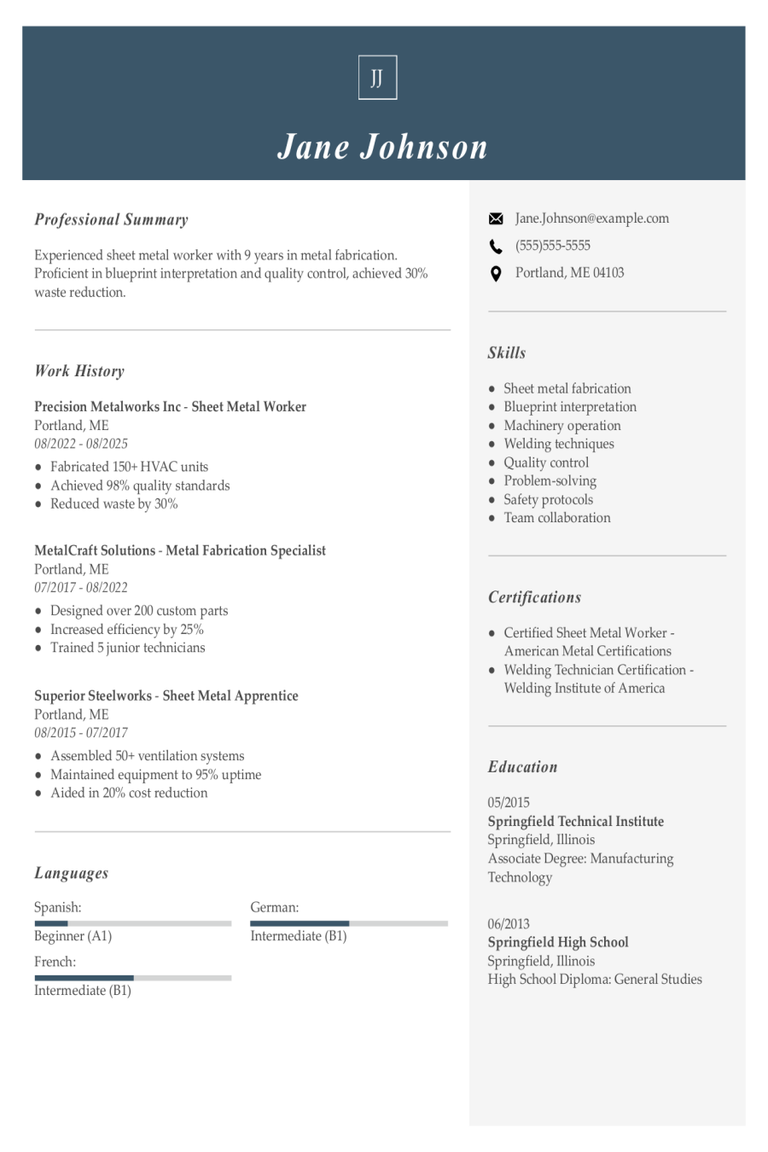
Sheet Metal Worker Resume Examples & Templates for 2025
Browse sheet metal worker resume examples and tips to learn how to highlight your hands-on experience and problem-solving abilities to stand out to recruiters and hiring managers.Build my resumeImport existing
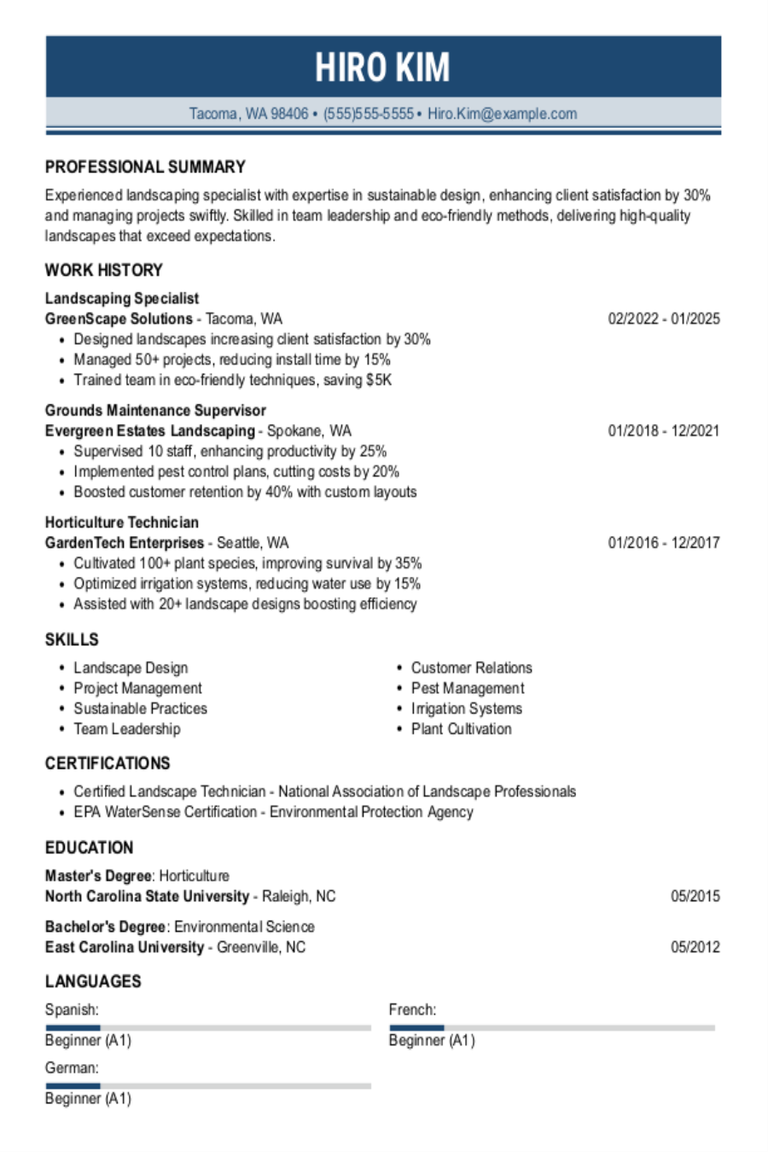
Landscaping Resume Examples & Templates for 2025
Explore landscaping resume examples to see how to showcase your gardening and design skills. Learn how to highlight your experience with plants, tools, and outdoor projects to catch the eye
